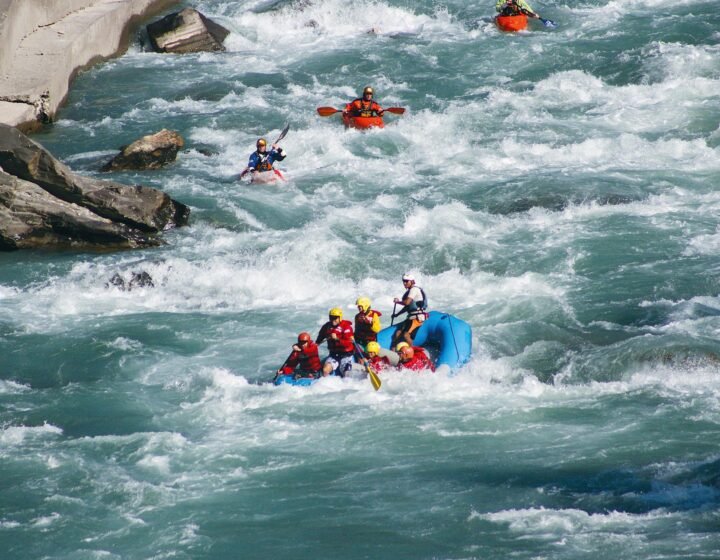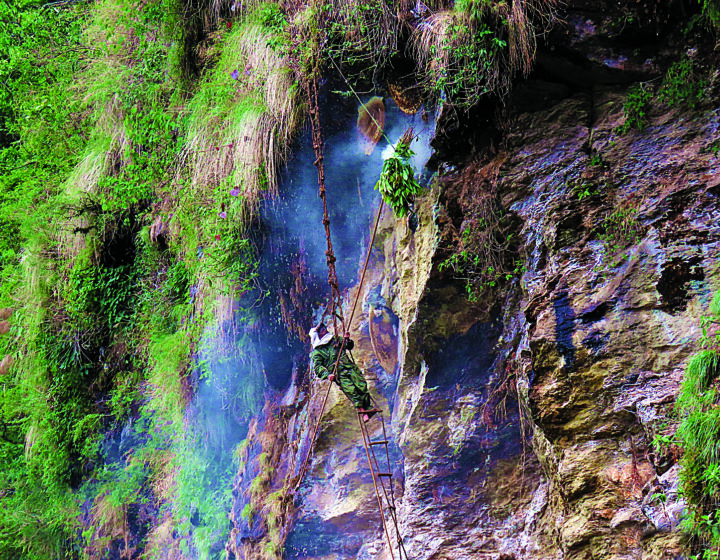- Details
Detailed itinerary
Itinerary- Tour Includes/Excludes
- Useful Info
- FAQ
Trip overview
Trisuli River rafting is a three-to-four-hour journey from Kathmandu. It’s a lovely, bouncy river with manageable speeds, making it excellent for novices. The waters are normally warm, and the river provides views of terraced agriculture, local communities, and extraordinarily high hills.
The Trishuli River originates at Gosainkunda, a Himalayan lake northwest of Kathmandu. Trishuli rafting is most popular between February and mid-June, then again between September and January. The monsoon season in Nepal occurs in July and August. Because of the high water volume and risks, it is difficult to schedule rafting expeditions during the monsoon.
Trishuli rafting and their guide prepare you for a rafting trip; all people over the age of 10 are welcome to raft, and they are given safety equipment such as helmets, paddles, and life jackets.
We provide rafting trips down the Trishuli River on both a group and a private basis. Group-joining set date tours are usually available during the season. The private journey requires a minimum group size of 5 people or more.
For the Trishuli River overnight rafting adventure, we will set up camp along the river’s banks. Camping and rafting in Nepal’s rivers will be delightful. After a few hours of rafting on the Trishuli River, we will return to Kathmandu via the main route. Alternatively, we might journey to Chitwan while admiring the surrounding scenery. The decision will be made by the rafter itself.
Itinerary
Drive to Charade and then raft down the Trisula River.Drive from Kathmandu to Charaudi, begin rafting on the Trisuli River, and have lunch someplace on the beach. We proceed down to Trisuli and Mugling before returning to Kathmandu or Pokhara, depending on your decision.
Included
- Shuttle service from your Kathmandu hotel.
- Tourist bus service to the rafting launching site and local bus transfer to Pokhara/Kathmandu
- An experienced adventure river guide to aid with safety.
- Meals: We will give lunch on the river beach.
- River permit, safety kayak, and first-aid kit for children.
- Required equipment includes high-quality self-bailing rafts, lifejackets, helmets, plastic paddles, wetsuits (only on particular rivers in the winter), dry bags for gear, camera barrels, and all safety and medical equipment.
- Food, insurance, and transportation for all employees
Not Included
- All bar bills, beverages such as mineral water, Coca-Cola Fanta, and so on.
- Hotel rooms and meals if you stay at a hotel at any point throughout your vacation.
- Personal items, internet, phone calls, and emergency evacuation.
- Insurance, gratuity, and appreciation for your guide and assistants.
Useful Info
- T-shirts, swimsuits, warm clothing for the evenings, fleece, or a pullover/jacket if rafting in the winter.
- Sunscreen and lip balm, sunglasses (with retaining mechanism), and/or a hat
- Towels and toiletries (preferably eco-friendly), personal medication
- Flashlight, footwear, reading material, fishing hook (if you fish), camera, cell phone, and chargers
FAQs
-
Is rafting in Nepal dangerous?
The level of the water and the current of the river will both rise during Nepal's monsoon season. Rafting is, therefore, riskier and more challenging during this season than during others. White water rafting is a popular activity in Nepal, and the currents in the water are strong. Rafting would become thrilling and daring as a result.
-
Is White water rafting is dangerous?
Yes, White rafting is safe even if you do it in rain. In this world, nothing is completely safe. Driving is a major cause of fatalities every year. Even bicyclists perish in traffic collisions. Accidents can occur anywhere and at any moment. If you go white water rafting with a qualified guide from a reputable outfitter, it is not dangerous. Always select a trustworthy rafting company and a knowledgeable guide, and you should be good to go. There is no risk of injury when using either of the aforementioned two items.
-
What is the easiest class of white-water rafting?
Class 1 and 2 outings involve floating. A typical entry-level class for rafting is 3. For adventure rafters, class 4 is intermediate to advanced. Class 5 is the most difficult and is only advised for expert rafters.







